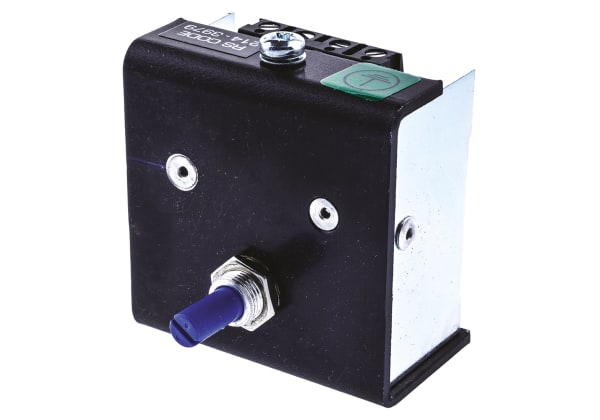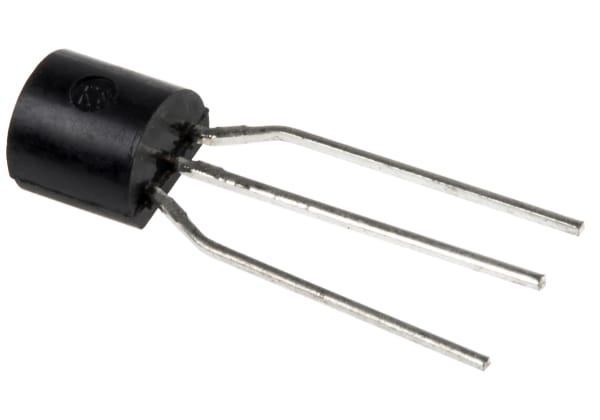- Published 25 Mar 2024
- Last Modified 25 Mar 2024
- 7 min
Advanced Materials for Manufacturing
Advanced materials include everything from advanced metals, ceramics, plastics, and composites to smart materials such as shape memory alloys and materials manipulated at the nanoscale. This guide explores the wide range of advanced materials used in the manufacturing industry and takes a look at how they might develop in the future.

Reviewed by David Carmichael, Solution Engineer (March 2024)
From ceramics and metal alloys to the latest polymers, engineers are constantly refining and searching for new advanced materials for manufacturing. Whether they are lightweight, tougher, durable, or especially elastic, advanced materials are defined as such because they have special qualities that outperform traditional manufacturing materials. Lightweight materials, for example, are playing a crucial role in the decarbonisation of the economy by allowing manufacturers to reduce the weight of cars, aircraft, and other forms of transportation.
Other materials can remember their original shape after being bent, while still others produce electrical energy when subjected to mechanical stress. There is also a whole range of new manufacturing materials being developed based on organic materials, such as bioplastics.
This guide explores the use of advanced materials for manufacturing and looks at some of the most innovative materials on the market.
Advanced Materials
Advanced materials for manufacturing come in many different forms, from metal alloys to the latest advanced technical ceramics. Advanced materials may be tougher than their conventional counterparts and reduce costs for the manufacturer when it comes to maintenance. They are used for a wide range of applications in sectors including aerospace, defence, energy, healthcare, and automotive.
The qualities of advanced materials mean they fulfil special engineering functions. Composite materials, for example, are widely used in aerospace manufacturing because of their high strength and lightweight. Lightweight advanced materials help reduce energy consumption and cut emissions of greenhouse gases as a result. In the medical sector, meanwhile, the biocompatibility of certain advanced materials means they will not be rejected by the human body.
Let’s take a look at some common types of advanced materials.
Advanced Metals
The development of advanced metal alloys is delivering materials that have features such as high thermal resistance, conductivity, or mechanical strength. An alloy of chromium, cobalt, and nickel is said to be the toughest alloy ever developed and is expected to be used in the aerospace and space industries. Some of these advanced metals are already used in the car industry to replace steel with high-strength, lightweight alloys. Other applications of advanced metal alloys include:
- Transportation systems where engineers want to reduce weight
- The nuclear industry
- Orthopaedics and medicine
- Gas turbine design
- Jet engine manufacturing
- Repairing components using additive manufacturing
Advanced Plastics
Advanced plastics for manufacturing exhibit superior strength and are less likely to deform under a load. They also retain their shape at high temperatures, have good electrical insulation, and are light in weight. These combinations of qualities make them useful for applications in industries where tough, durable, but lightweight materials are needed, such as in car engine components. Advanced plastics are also commonly used in electronics applications because of their electrical insulation. They are also used in healthcare for precision surgical instruments, and in industry for gears, bearings, and seals because of their low friction and resistance to wear.
Advanced Ceramics
Advanced ceramics include materials such as alumina, zirconia, silicon carbide, and silicon nitride. Advanced ceramics are extremely tough when compressed and are capable of working at very high temperatures, which makes them suitable for use in extreme environments like jet engines and furnaces. They are also relatively light (lighter, for example, than some metals like stainless steel and titanium). Silicon carbide is one of the most important modern advanced ceramics. It’s used in the power industry because of its ability to withstand high voltages. Advanced ceramics are also used in electronics and electrical engineering, and have optical and magnetics applications.
Composite Materials
Composites combine two materials to create a whole that is stronger than the sum of the parts. Composite materials examples include carbon fibre composites, which are made by combining carbon fibre with resin. These materials feature high strength, good strength-to-weight ratios, great heat resistance, and low thermal expansion. They are widely used in aerospace (the Boeing 787 is 80% composite material, for example) because of their lightweight and high strength, and for the same reasons in motorsport – especially Formula One. They have the disadvantage of being relatively expensive compared to glass fibre or plastic fibre-based composites.
Organic Advanced Materials
Organic advanced materials include bioplastics produced from biomass such as corn starch or sugarcane. Organic polymers have been used as coatings, protective films, and as part of structural components for some time. Organic materials derived from lipids, meanwhile, provide a promising means of developing sustainable food packaging.
Functional organic materials include organic substances that feature photo or electroluminescence or function as semiconductors. There is even the possibility of developing organic electronics circuits using organic plastics. These designs have the potential to be lighter and cheaper than conventional silicon-based circuits.
For more about RS and the electronics industry, visit our semiconductors, discrete semiconductors, and bipolar transistors pages.
Smart Materials
What are smart materials? They are advanced materials that change in response to an external stimulus. Examples of smart materials include photovoltaic materials in solar cells, which convert solar radiation into electricity. They also include chromoactive materials, which change colour in response to a change in light, temperature, or pressure, and magnetorheological materials, which change when exposed to a magnetic field.
Smart materials are sometimes known as responsive materials because of their ability to alter their characteristics in response to an external element. Ultralight, and with high thermal and electrical conductivity, graphene is a widely recognised smart supermaterial that has applications in everything from buildings and batteries to solar cells and faster PCs.
Piezoelectric Materials
Smart materials that produce voltage when mechanical stress is applied, piezoelectric materials are used in everything from inkjet printers and microscopes to electric guitar pickups. With piezoelectric materials, the reverse effect is also true. A voltage applied to the material will stress it. This means these smart materials can be used to make structures that bend, expand, and contract if subjected to voltage.
Shape Memory Alloys
Another example of a smart material is the shape memory alloy, an alloy that can be bent but returns to its original form if heated up. This phenomenon is known as the ‘shape memory effect.’ One of the first shape memory alloys was nickel-titanium (known as Nitinol), which features a good level of corrosion resistance combined with outstanding electrical and mechanical properties. A common application for shape memory alloys is actuators development. They are also widely used in medicine in the stents inserted into patients to widen arteries because they can change shape in response to body temperature.
Advanced Materials Applications
Today, advanced materials have properties that go above and beyond everyday materials like steel, aluminium, and titanium to reach new levels of performance, opening up the possibility of previously unthought-of applications. Composite materials have already revolutionised the transport industry, while advanced metal alloys are critical to everything from modern medicine to gas turbines and the oil and gas industry. For the engineer, advanced materials offer new functionality and provide a potential means of conserving resources, improving sustainability, and diminishing the impact of manufacturing on the environment.
Advanced materials and alloys now include not only metals, composites, plastics, and ceramics but also organic materials and processes that manipulate them at a cellular level. For example, nanotechnology has emerged as a means of manipulating materials with special characteristics that can influence biological, chemical, and physical behaviour at a scale of between one and 100 nanometres. Using advanced materials at this minuscule level will influence innovation in medicine, for sure, but also provide the impetus for new consumer products, types of energy systems, and forms of advanced manufacturing techniques.
In the future, advanced materials are expected to play a role in the development of new supercapacitor technology for storing intermittent renewable energy, and tiny materials that change their shape to store data in computer memory. Advanced metals, ceramics, and composites are also playing a key role in the development of new and improved additive manufacturing (3D printing) technology, while artificial intelligence is being used to refine and develop new types of corrosion-resistant alloy.
When it comes to advanced materials and industry, it seems the only limit to their use is our imagination (or that of our computers).
Do you want to know more about semiconductors? Read the RS introduction here.


